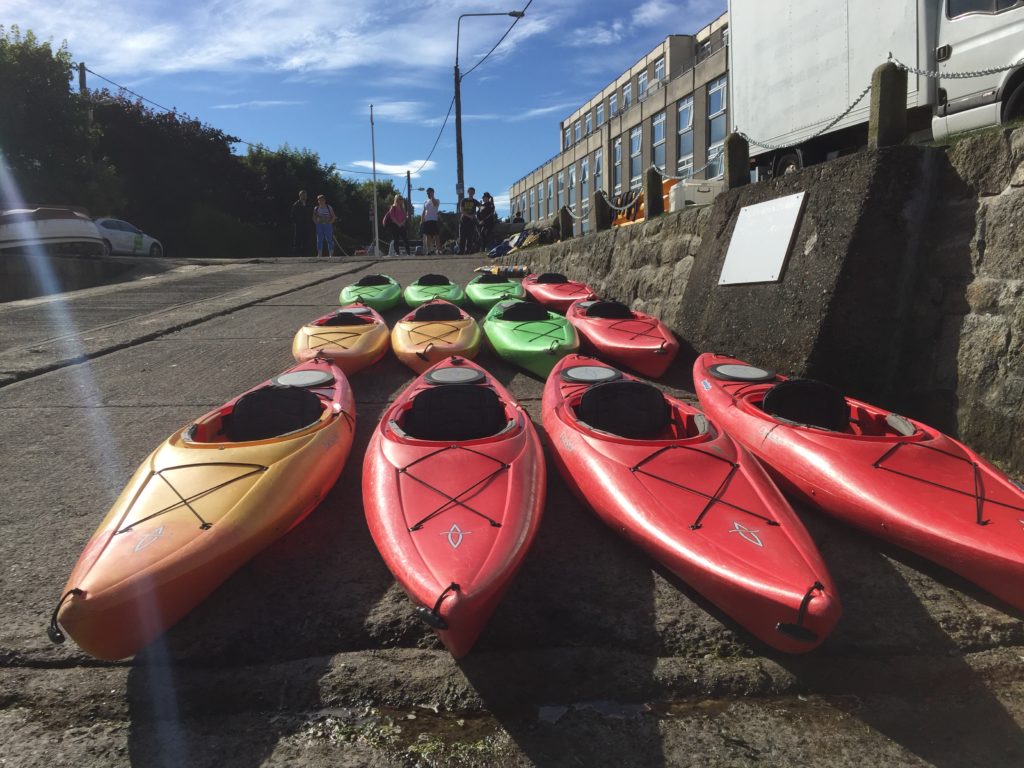I admitted here recently that I had aspired to kayak around Ireland. A week later, Michael Viney had an article in the Irish Times that caused me to acquire a story of an actual journey around Ireland by Kayak. The secret sauce.

Viney had written that what ‘stirred my imagination was reading the remarkable kayaking diary of Co Kerry’s late Timmy Flavin, who circumnavigated Ireland in 1991. He sadly died in 2015, and his widow Bríd published his daily log, with ample maps and photographs, four years later (€15, for charities, from bridofarrell@icloud.com).’
So I contacted Bríd and shortly afterwards I received and read the book in one sitting. It’s captivating. I later told Bríd that ‘it was a great read. An epic journey that should discourage others but perversely, makes me want to do it more than ever.’
But I know I won’t. I’m a boomer born to silent generation parents, as they say in the US, and it’s almost five years since I was last in kayak. My time to paddle around Ireland in a month with blisters and sea boils is behind me. Besides, my ‘rugby’ injury has rendered my neck and shoulder a tad inflexible. In truth, there were one or two motorcycle crashes in my youth that probably are the root cause of the spondolytis that looks so impressive in the MRI images. Not to forget the broken vertebrae that put me in a brace for year after a badminton incident (that’ll need more explanation sometime).
Bríd replied with some encouragement. ‘I think it’s more doable now than 30 years ago’ and added that a man ‘who bought a copy of it had his father support him as he sailed in a dingy.’ I took that as a suggestion that I might sail it rather than support someone else doing it.
So I read a story from the perspective of the man in the dinghy as reported by Lorna Siggins in The Irish Times. She wrote about it as ’54 days and a 2,500km round trip’.
Hold on a mo! Timmy and Donal kayaked some 1500 km in 37 days. Both of these circumnavigations lost seven days to weather. Doing it in a dinghy seems positively easy by comparison to doing it in kayak. Why’d it take so long in a boat twice as big as a kayak? Don’t get me wrong, the dinghy trip was a major challenge. As Siggins wrote, ‘fundraising for heart disease was no plain sailing’.
Being considerate to my spine, it’ll be the ease of rambling that makes a walk around the country seem attractive to me. Peter Lynch’s Rambling Around Ireland arrived in today’s post and I can see his route. He was very sensible and took 13 years to walk 1720 km. My ambition would be a more coastal path than the ‘commodius vicus of recirculation’ that Lynch followed. But the length of the coastal plan is near indeterminate, in time and distance.
Yesterday, I posted that I was out looking for magnolias to photograph. My tree society guide showed me a right of way that is now overgrown and thus not available to those who’d like to exercise their rights. It annoyed me to see yet another rambling route lost. This is a country with the highest road density in Europe yet with very limited rights of way across the land. Our roads are so badly suited to rambling that it’s a disgrace. I don’t want to lose my head here but it really concerns me that I’ve nearly died by SUV mirror decapitation on several official way-marked boreens.
And so, on to Rome. In truth, I wonder if it will ever happen. Perhaps in 202? or maybe the year after I walk The Wild Atlantic Way, way-marked more for cars than people. Or maybe after I circumambulate the entire island itself.
In closing, a question. Is there anyone using satellite photos to document the individual trees of Ireland, Europe or any part of the world? Surely foresters are onto this. I’m thinking about a potential photo project for March and I’d like to find all the magnolias within a 5 km radius of my home. It strikes me as that trees that bloom early should be easy to image from satellites and identify / locate with machine learning. Perfect for GIS. Anyone know anyone who knows?

Leave a Reply